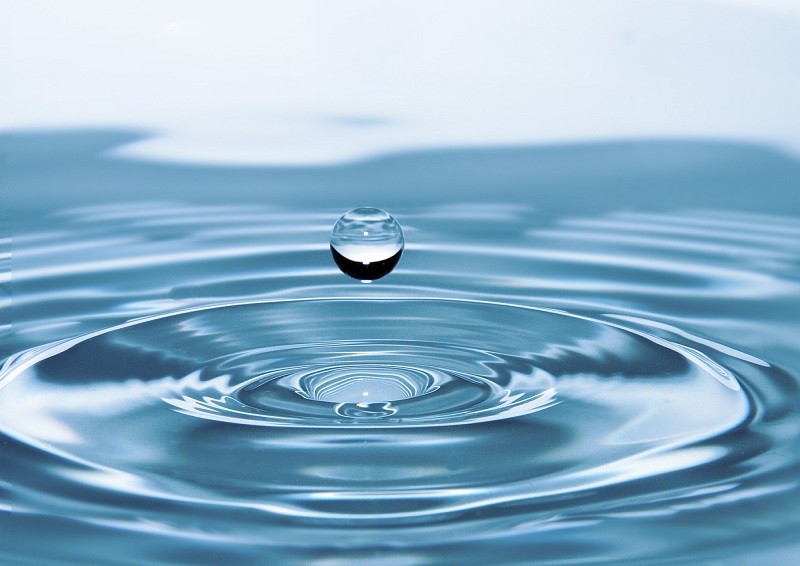Water
Water is a chemical compound that is essential for all known forms of life. As a transparent, tasteless, odourless and almost colour-less substance, it covers 71% of the Earth’s surface and is the main constituent of rivers, lakes oceans and so on.
The chemical formula of water is H2O. Each molecule contains one oxygen atom and two hydrogen atoms. Water, in the strict sense, refers to the liquid state of the substance, but it can also be used to refer to the solid state (ice) and the gaseous state (steam or water vapour).
Water moves continuously through the water cycle which comprises:
- Evaporation and transpiration.
- Condensation.
- Precipitation.
- Run-off.
In order to sustain human and other forms of life, safe drinking water is essential, with good sanitation being the single most important determinant of public health. Sanitation has improved globally in recent decades, but it is estimated that more than 2.5 billion people still do not have access to adequate sanitation and 1 billion do not have access to safe water. Forecasts suggest that by 2025, over half the world’s population will be vulnerable in some way related to water supply or sanitation.
Water supply is the provision of water by utilities organisations, typically using a pump and pipe system.
Typically, the first stage of the water supply process is the collection of rainwater in reservoirs, either from rivers or streams or from groundwater. This is pumped to water treatment works where it undergoes a number of processes, the first of which is screening which ensures the removal of large elements such as branches and vegetation. Following this, flocculation takes place – the adding of a solution which makes particles larger and easier to remove. Additional filters are subsequently used, such as:
- Rapid gravity filter: Water is passed through a tank of coarse sand which traps particles.
- Slow sand filter: Water is slowly filtered through large beds of fine sand.
Testing of the water’s purity is carried out several times before a tiny amount (less than one milligram per litre) of chlorine is added to kill any organisms or bacteria which may remain.
Once treatment is complete, the water is stored in covered reservoirs before being pumped out via a distribution network of pipes and pumping stations.
Designing Buildings has a number of articles relating to water:
- Approved Document G
- Blackwater.
- Bound water.
- Chilled water.
- Clarified water.
- ECA Water Scheme.
- Firefighting water.
- Flood and Water Management Act.
- Foul water.
- Greywater.
- Groundwater.
- Groundwater control in urban areas.
- Hydroinformatics.
- Mains water.
- Moisture.
- Passive water efficiency measures.
- Public water supply.
- Rainwater harvesting.
- Rainwater.
- Rainwater goods.
- Sustainable urban drainage systems.
- Sustainable water.
- The Dublin Statement.
- The State of the Environment: Water Resources.
- Trading systems for water resources.
- Types of water.
- Urban water systems management: A data analytics approach EP 105.
- Water Act 2014.
- Water closet
- Water consumption
- Water conservation
- Water efficiency – The next big sustainability issue?
- Water engineering
- Water framework directive.
- Water Industry Act 1991.
- Water industry pressures.
- Water investment.
- Water pollution.
- Water safety plan WSP.
- Water source heat map
- Water source heat pumps
- Water table.
- Water technology list
- Water transfers and interconnections.
- Water vapour.
- Why innovation is needed in the water sector.
- World Water Day.
Featured articles and news
CIOB report; a blueprint for SDGs and the built environment
Pairing the Sustainable Development Goals with projects.
Latest Build UK Building Safety Regime explainer published
Key elements in one short, now updated document.
UKGBC launch the UK Climate Resilience Roadmap
First guidance of its kind on direct climate impacts for the built environment and how it can adapt.
CLC Health, Safety and Wellbeing Strategy 2025
Launched by the Minister for Industry to look at fatalities on site, improving mental health and other issues.
One of the most impressive Victorian architects. Book review.
Common Assessment Standard now with building safety
New CAS update now includes mandatory building safety questions.
RTPI leader to become new CIOB Chief Executive Officer
Dr Victoria Hills MRTPI, FICE to take over after Caroline Gumble’s departure.
Social and affordable housing, a long term plan for delivery
The “Delivering a Decade of Renewal for Social and Affordable Housing” strategy sets out future path.
A change to adoptive architecture
Effects of global weather warming on architectural detailing, material choice and human interaction.
The proposed publicly owned and backed subsidiary of Homes England, to facilitate new homes.
How big is the problem and what can we do to mitigate the effects?
Overheating guidance and tools for building designers
A number of cool guides to help with the heat.
The UK's Modern Industrial Strategy: A 10 year plan
Previous consultation criticism, current key elements and general support with some persisting reservations.
Building Safety Regulator reforms
New roles, new staff and a new fast track service pave the way for a single construction regulator.
Architectural Technologist CPDs and Communications
CIAT CPD… and how you can do it!
Cooling centres and cool spaces
Managing extreme heat in cities by directing the public to places for heat stress relief and water sources.
Winter gardens: A brief history and warm variations
Extending the season with glass in different forms and terms.
Restoring Great Yarmouth's Winter Gardens
Transforming one of the least sustainable constructions imaginable.
























